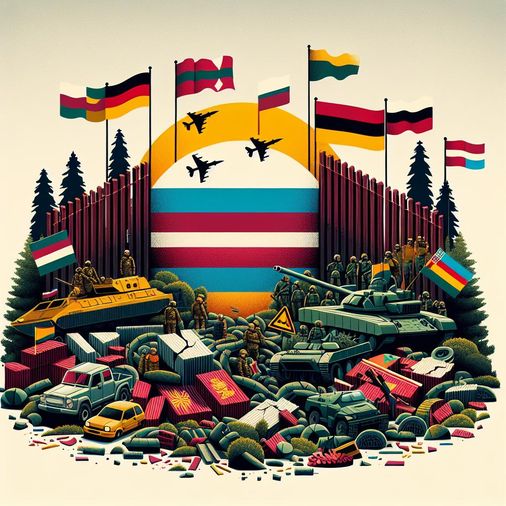Escalation in the Kursk Region: War Updates and Implications for Ukraine and Russia

The ongoing conflict between Ukraine and Russia escalated significantly with renewed military actions and a series of attacks reported from the Kursk region, underlining the volatile nature of the war that has rattled both nations and the surrounding areas.
The situation has become increasingly complex with reports indicating casualties on both sides, often sourced from military authorities that lack independent verification. Casualty figures from Ukraine and Russia are often conflicting, raising concerns about the reliability of the information disseminated.
In a recent series of events, Ukrainian President Volodymyr Zelensky commented on attacks into the Russian territory near Kursk, stating that Ukraine is determined to bring justice and enforce pressure on its aggressor. This incursion into Russian territory has led to damage within Kursk, heavily affecting civilian infrastructure and resulting in injuries among residents. At least 13 people were reported injured when debris from a shot-down Ukrainian rocket fell on residential buildings in the city, demonstrating the direct impact of the conflict on ordinary lives.
The humanitarian toll continued to rise with reports of a tragic rocket attack in Browary, near Kiev, where a father and his four-year-old son were killed as they were trapped under rubble. This incident highlights the ongoing brutality of the conflict, as urban centers are increasingly becoming battlegrounds.
As hostilities continue, the repercussions extend beyond direct confrontations. The International Atomic Energy Agency (IAEA) has raised alarms regarding the nuclear power plant in the Kursk region, warning of potential dangers amid the intensified military actions. With military activities reportedly increasing in the vicinity, the IAEA has urged all parties to adhere to safety regulations to avert a potential nuclear incident, which could have devastating consequences for the region and beyond.
Furthermore, Ukraine's military operations have targeted Russian assets, exemplified by an attack on a gas production platform in the Black Sea that allegedly resulted in the deaths of 40 Russian soldiers. These actions are framed within the context of preventing military interference in civilian shipping, with Ukrainian authorities asserting that previous attempts from Russia to use such platforms impaired navigation safety for grain freighters.
In response to the aggressive posture, the U.S. government has ramped up military aid to Ukraine, announcing an additional $125 million package aimed at bolstering defenses against the Russian invasion. This represents the tenth installment of military support since early 2023, including essential munitions and air defense systems to enhance Ukraine's capabilities amidst the ongoing conflict.
Simultaneously, there are significant emphasis on evacuations from the northern border areas of Ukraine, particularly in Sumy, where local authorities are urging civilians to vacate 28 villages due to the advancing military operations. This evacuation effort underscores the urgency to protect civilian lives amid the warfare that has increasingly encroached upon residential zones.
Russia's internal communications face strain as well; authorities have blocked the encrypted messaging service Signal, citing legal violations, a decision reflecting the broader control over information and response to dissent within Russian society. This move has furthered speculation about the internal stability in Russia as the war drags on and public sentiment remains ambivalent.
As the war unfolds with increasing unpredictability, the humanitarian implications grow ever more severe. The toll on civilian life, coupled with apprehensions of a nuclear incident and the pressure on refugees, paints a grim picture of the conflict's trajectory. The international community watches closely, hoping that diplomatic efforts will soon emerge to alleviate the suffering caused by this devastating war.
Related Sources:
